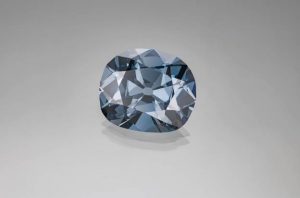Inclusions give clues to blue diamonds’ origin
by carly_midgley | August 10, 2018 9:42 am
 [1]
[1]Photo by Robert Weldon © GIA. Photo courtesy Smithsonian Institution
A new study might reveal what causes blue diamonds’ colour. For the first time, research has been conducted on mineral inclusions in blue diamonds, indicating small amounts of boron could be the driving factor behind these rare gems’ hue.
The research team was composed of experts from the Gemological Institute of America[2] (GIA), the Carnegie Institution for Science[3], the University of Cape Town[4] (UCT), and the University of Padova[5]. Results were based on the assessment of 46 blue diamonds submitted to GIA for grading over the past two years.
“Blue diamonds like the famous Hope diamond have intrigued scientists for decades, but the rarity and high value of these gems and their near lack of mineral inclusions have been major hurdles to research,” said Evan Smith, a GIA research scientist who worked on the study. “The opportunity to study these rare diamonds at GIA gave us insight to their incredible origin.”
The results point to boron as the most likely source of the blue colour, despite the fact these diamonds generally form at depths of 660 km (410 mi) or greater, at which the element is rare. The research team hypothesizes the boron in the diamonds was transported to the Earth’s lower mantle with the tectonic movement of ancient oceanic plates.
Details on the research were recently published in the international scientific journal Nature. An abstract[6] for that article and a summary[7] of the study are both available online.
- [Image]: https://www.jewellerybusiness.com/wp-content/uploads/2018/08/blue.jpg
- Gemological Institute of America: https://www.gia.edu/
- Carnegie Institution for Science: https://carnegiescience.edu/
- University of Cape Town: http://www.uct.ac.za/
- University of Padova: https://www.unipd.it/en/
- abstract: https://www.nature.com/articles/s41586-018-0334-5
- summary: https://www.gia.edu/blue-diamonds-have-surprise-origin-and-link-to-ocean
Source URL: https://www.jewellerybusiness.com/news/inclusions-give-clues-to-blue-diamonds-origin/